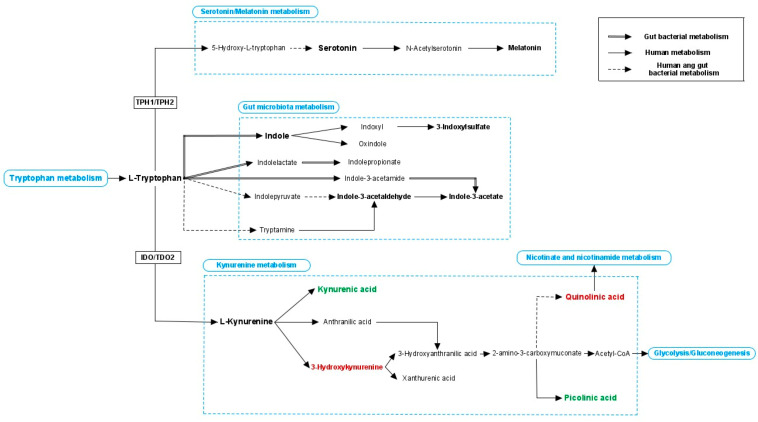Figure 2.
Tryptophan metabolism. Tryptophan can enter three different pathways: serotonin/melatonin pathway, gut microbial metabolism and kynurenine pathway. Tryptophan hydrolase 1 and 2 (TPH1 and TPH2, which are expressed in the intestine and brain respectively) enzymes are key regulators of serotonin production. Many indolic compounds are derived from bacterial metabolism but also human enzymes contribute to their production, and they showed to affect multiple processes of the host. Indoleamine-2,3-dioxygenase (IDO, expressed in different organs) and tryptophan-2,3-dioxygenase (TDO2, expressed specifically in the liver) control the first and rate-limiting step of the kynurenine metabolism. Kynurenine can be metabolised into kynurenic acid that is considered to have neuroprotective properties. Alternatively, kynurenine can enter another pathway where several compounds were reported to have neurotoxic effects. Continue line: human metabolism; double line: bacterial metabolism; discontinue line; both human and bacterial metabolism; green coloured word: neuroprotective effects; red coloured word: neurotoxic effects.

